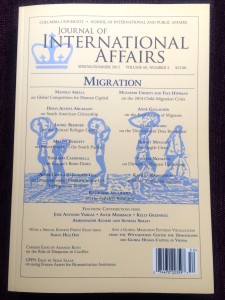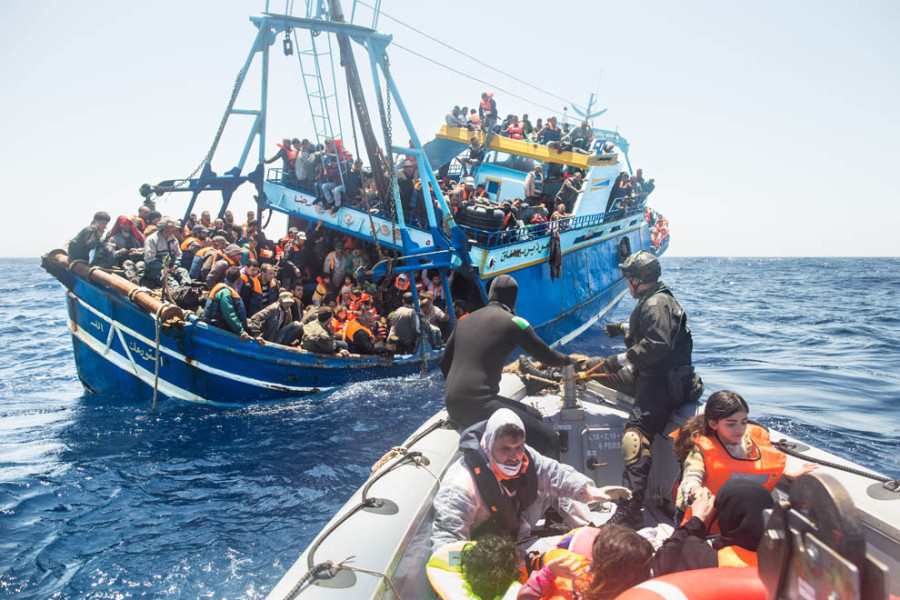Migration, Trafficking and Network Disruption
On Tuesday, April 28th, I had the distinct pleasure and honor to participate in the Thought Leadership Forum at Columbia University’s School of International and Public Affairs (SIPA), a semi-annual event that celebrates the launch of the Journal of International Affairs, the most prestigious academic journal in the field. Columbia University is also my four-time alma mater, so to say I was pleased would be an understatement.
The journal always publishes in a single-issue format: like a book, collecting essays centering on one topic. The current issue is Migration.

My contribution, Never Mind the Metrics: Disrupting Human Trafficking By Other Means, makes the argument that, unlike the broader category of human migration, human trafficking is particularly challenging to measure and map. Even the UNODC, which has the most comprehensive data, does not have adequate measurements, because it relies on prosecutions of human trafficking in member countries. That is problematic because: a) even in some EU countries there is no statute against human trafficking; b) most human trafficking cases are prosecuted under different statutes, such as prostitution, kidnapping, or labor violations; c) human trafficking does not exist as a term in many languages and it is therefore translated as “to kidnap and sell someone,” which completely misses the point that many victims of trafficking start out as voluntary clients for smuggling who then end up indentured through a debt bondage system.
I argue for an approach that has worked well for us at Asymmetrica: follow the money to find the links to other crimes. There are always links to other crimes: where people move, so do drugs, weapons and money. Trafficking victims also often work in businesses that are also money laundering operations: women in karaoke bars, brothels, massage parlors; men in construction or mining.
Criminal networks are adaptive and extensive. Bringing down one cell involved in one activity has little long-term impact.
Much greater impact is achieved by attacking a network at various points for multiple crimes with several authorities at once. This is what we in security circles call a “swarm tactic.” It requires a sophisticated vulnerability assessment of the network by someone who can oversee and or at least work with different authorities (whether counter-terrorist or counter-organized crime; whether diplomatic, intelligence or law enforcement) and coordinate them to overcome their stovepiped structure and limited budgets. Not only is such a “swarm” effective to disrupt and degrade criminal networks (including those that traffic humans), but it yields far greater bang-for-the-buck efficiencies for the competent law enforcement authorities.
![]()



